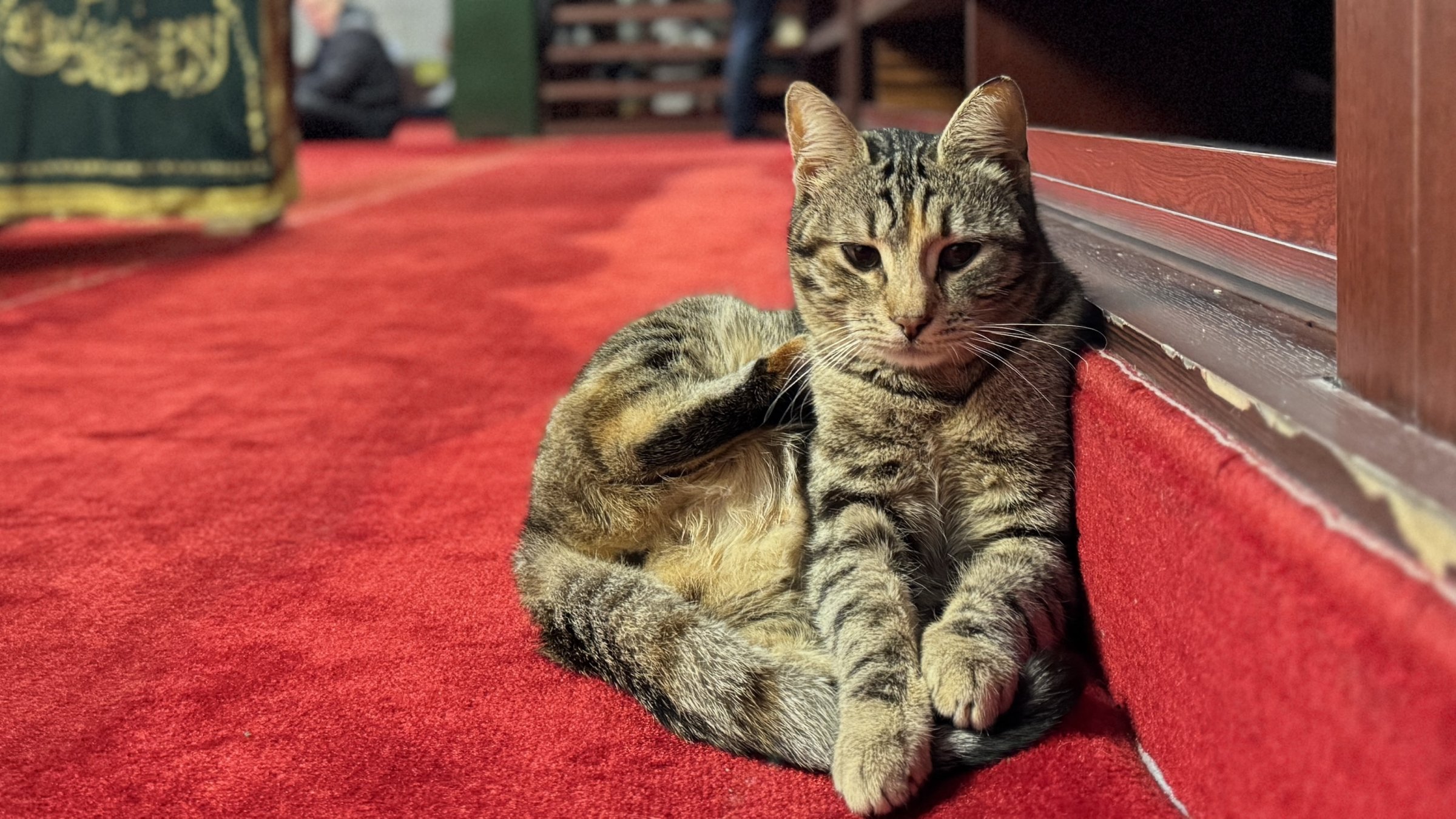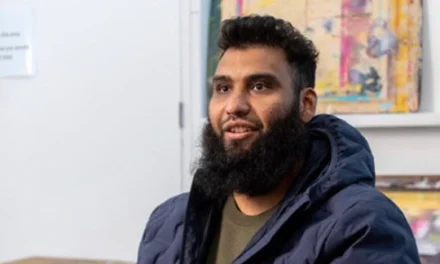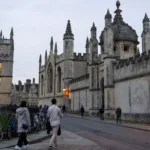Every corner of Istanbul is home to cats, including this one resting inside a mosque, Istanbul, Türkiye, Feb. 17, 2025. (AA Photo)
Istanbul, which has hosted many civilizations throughout history, is known not only for its historical and cultural richness but also for its cats, which can be found on almost every street.
The megacity, throughout history, has become one of the world’s most admired cities due to the “pearl of the Bosporus,” its historical texture, cultural beauties and the never-ending activity that takes place 24/7.
The city, which hosts thousands of domestic and foreign tourists daily, is known for its crowds of people and its cats.
The cats, which have made almost every corner of the city their home, have become symbols of districts such as Fatih, Kadıköy and Beyoğlu.
As tourists roam Istanbul, they often see the city’s permanent residents, the cats, sometimes chasing a seagull to eat simit (Turkish bagel) or waiting for the fish caught by amateur fishermen.
Sometimes posing in historical places or wandering through alleyways, the cats are diverse in breed and color.
The cute cats, often named based on their physical features and fur color, such as “Tekir,” “Kartopu,” “Sarman,” “Duman” and “Kömür,” have become symbols for photography enthusiasts. Photographers capturing the city’s historical landmarks often include these cats in their pictures.
The cats of Istanbul, nourished by the food given by shopkeepers, local residents and tourists, never fail to charm people.
These cats, which are used to humans, persist in following local residents and tourists when they seek affection.
Meowing to signal their desire to be petted, the cats continue on their way after being stroked, showing gratitude.
Historian and writer Zafer Bilgi, speaking to Anadolu Agency (AA) about the historical presence of cats in the city, stated that cats are an indispensable part of the city’s culture.
Bilgi noted that after the conquest of Istanbul on May 29, 1453, “külliyes” (complexes) were built on the seven hills and that Fatih Sultan Mehmet also had a külliye built in the middle of the seven hills, where cats have been prevalent ever since.
Bilgi also mentioned that records from 500 years ago indicate that the Bayezid Mosque was constructed after determining how the income for feeding the animals living nearby would be ensured to protect their rights.
He also explained that during the reign of Sultan Murad III, the first Universal Animal Rights Declaration was published and that compassion and mercy toward cats led them to become a part of the city’s culture. “In the 1500s, protecting cats and dogs through these declarations and edicts was not just a matter of law or decree but a reflection of the sensitivity of the people. There is a saying in Istanbul: ‘Beyazıt’s saint, madman and cat are never absent.’ Cats are actually a reflection of compassion and mercy,” he explained.
Bilgi shared that historical records mention Ismail Saib Sencer, a former director of the Beyazıt State Library in Fatih, who owned around 40 cats and spent a third of his salary on their care.
He also highlighted the “mancacı” tradition from the Ottoman era, where individuals, after prayers, would carry liver and, in exchange for a fee, feed cats and dogs, similar to modern-day birdseed vendors. This practice, he noted, was deeply rooted in Istanbul’s urban culture, although it cannot be solely attributed to the Ottoman period.
Bilgi emphasized that cats have been an inseparable part of Istanbul for over 500 years, finding a secure place in the city. He explained that these cats have become integral to the city’s identity – part of its family, therapy and spiritual practices. The compassion and mercy shown to them by the people are evident, as they have lived peaceful, long lives in the safest corners of the city. Unlike other cities, where pedigree cats are treated with special reverence, Istanbul treats all cats equally. In Istanbul, a cat is considered a guest, embodying the saying, “Love the created for the sake of the Creator.”
By Daily Sabah with AA














